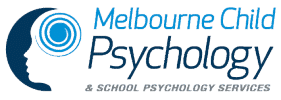Research indicates that Attention Deficit/Hyperactivity Disorder (AD/HD) may be more prevalent in girls than what is currently recognised.
Compared to boys, girls are more likely to present with AD/HD inattentive type, rather than with the hyperactive or combined type, which includes the more classic symptoms of AD/HD – hyperactivity and impulsivity.
Girls with AD/HD tend to have difficulties with:
- Maintaining focus and concentration
- Organisation
- Planning
- Decision-making
- Goal-setting
But compared to boys with AD/HD, girls are less likely to show disruptive behaviours and to have impulsive outbursts that draw attention in the classroom.
This makes it harder for teachers (and other professionals) to identify them. This, unfortunately, often leads to girls being undiagnosed or misdiagnosed.
However, girls with AD/HD are just as likely as boys with AD/HD to develop academic, behavioural and social difficulties. So, going undiagnosed and not receiving the necessary support and treatment may put them at a higher risk of developing low self-esteem, a sense of helplessness, and even depression.
On the other hand, there are the hyperactive/impulsive AD/HD girls – girls who simply cannot sit still, who are extremely chatty, who have difficulty measuring the consequences of their behaviour, and who sometimes act more aggressively than other girls.
Adults may view these girls as “silly”, “ditzy”, “scattered” or as social butterflies, and their intellectual abilities may be underestimated.
These girls are easy to spot in a classroom because their intrusive behaviour is viewed as inappropriate or out of norm. These girls are the “lucky” ones because they are more likely to be diagnosed and treated.
What about adolescent girls with AD/HD?
Kids with AD/HD often outgrow the symptoms they experienced in childhood. Hyperactivity and impulsivity during adolescence may not be as noticeable as when kids are seven-years-old.
However, adolescence brings new challenges to AD/HD girls. Hormonal changes, increased responsibilities and expectations, social and academic pressures – can make this period an emotional rollercoaster.
These girls are at risk of internalising their emotions and difficulties and engage in self-harming behaviours. In addition, adolescent AD/HD girls are at risk of:
- Having low self-esteem
- Developing a negative self-image
- Showing high rates of relational aggression
- Showing covert compulsive behaviours (e.g., binge eating and purging)
- Experience substance abuse and sexual promiscuity
- Developing anxiety
- Developing depression
Treatment for girls with AD/HD
The good news is that treatments effective for boys are also effective for girls! A combination of non-pharmacological and pharmacological interventions is recognised as the most effective treatment for AD/HD.
It is crucial that treatment is tailored to the specific difficulties the girl has. The best treatment outcomes occur when there is collaboration between professionals (GP, paediatrician, psychologists, etc.), parents, teachers and the child.
Inattentive girls need help to develop strategies to stay on-task, and to plan and organise their work.
On the other hand, chatty and impulsive girls may need help with developing self-management strategies to control their impulses.
Adolescence presents additional problems for girls with AD/HD. The hormonal fluctuations that commence at puberty influence the presentation of AD/HD, and premenstrual syndrome (PMS) may worsen the symptoms. Therefore, close collaboration between practitioner, parents and patient is crucial for a successful management of symptoms.
Non-pharmacological treatments for AD/HD include:
Parent coaching – Parent coaching helps parents understand the roots of their child’s behavioural difficulties and how to address these. A crucial part of parent coaching is to improve the bond between parents and child. Parents learn behavioural management strategies – skills to help their children plan and organise themselves better, to make better decisions, to take responsibility of their own behaviour, as well as how to use effective reward systems.
Counselling – Girls with AD/HD who are experiencing psychological and emotional distress will benefit from counselling. An experienced counsellor or psychologist can help by teaching skills to better regulate their emotions. Counselling is also helpful to address low self-esteem and confidence, anxiety, depressive symptoms, and other difficulties.
Educational coaching – Educational coaching helps girls with AD/HD who are struggling at school because of difficulties with inattention, organisation, planning and procrastination.
School interventions/accommodations – Modifications to the school curriculum may be required to help the student succeed in learning and academics. The classroom environment, teaching style, classroom and homework activities may need to be adjusted to meet the student’s needs. It is highly recommended to develop an Individual Learning Plan that is reviewed every term in a meeting between the student’s parents, teachers and other relevant staff. Regular communication between home and school is essential to ensure the strategies that have been put into place are enforced in both environments.
If you would like some help with your child’s particular challenges please get in touch.
References
http://ADDvance.com/help/women/index.html
Quinn, P.O. (2005). Treating adolescent girls and women with ADHD: Gender specific issues. Journal of Clinical psychology, 61, 579-587. DOI: 10.1002/jclp.20121
Nadeau, K., Littman, E., & Queen, P. (1999). Understanding Girls with AD/HD. Silver Spring, MD: Advantage Books.
Rief, S.F. (2003). The ADHD book of lists. A practical guide for helping children and teens with Attention Deficit Disorder. San Francisco, CA: Jossey-Bass.

